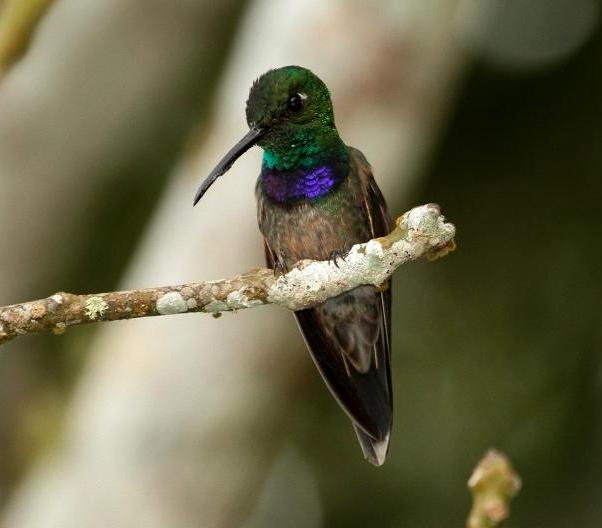 |
| Photo by Margareta Wieser (Internet Bird Collection) |
Common name:
violet-chested hummingbird (en); beija-flor-violeta (pt); colibri à poitrine violette (fr); colibrí pechiazul (es); veilchenbrustkolibri (de)
Taxonomy:
Order Apodiformes
Family Trochilidae
Range:
This South American species is only found in northern Venezuela and adjacent Colombia, in the Cordillera de Mérida and the Cordillera de la Costa Central.
Size:
The violet-chested hummingbird is 12-13 cm long and weighs 8-10,5 g.
Habitat:
These birds are mostly found in tropical evergreen forests, but also in second-growth forests and woodlands and even in coffee plantations. They are found from sea level up to an altitude of 1.900 m.
Diet:
They mostly feed on the nectar of Heliconia flowers.
Breeding:
Violet-chested hummingbirds breed in March-July. The female builds the nest alone, an open cup composed of soft plant materials, namely fibers of Bombacaceae, and moss, tree fern Cyathea scales, spider webs, and small pieces of lichen. The nest is usually placed in the forks of branches of various tree species, or sometimes on thin vines and small ferns, about 2 m above the ground. There the female lays 2 white eggs which she incubates alone for 20-21 days. The chicks are only fed by the female and fledge 26 days after hatching.
Conservation:
IUCN status – LC (Least Concern)
Although this species has a restricted breeding range, it is described as fairly common. The population trend is not known, but the population is not believed to be decreasing sufficiently rapidly to be considered threatened.







